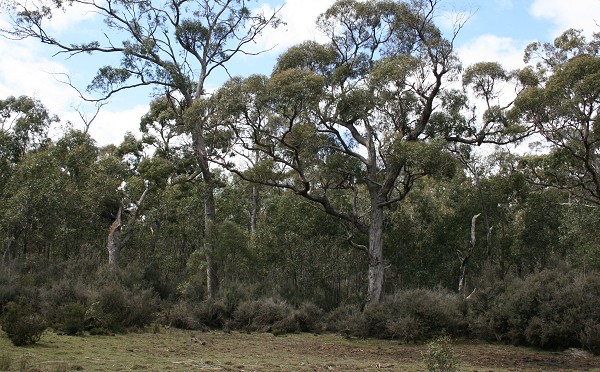Probably I shouldn’t include Mrs Davis, because she doesn’t play an important part in the story, but you can’t expect me to pass on Brady & Co, and she is interesting — for something it’s claimed she didn’t do.
This little notice appeared in the Hobart Town Gazette on the 8th July 1825:
Brady and McCabe made their appearance during the week, at the Farm of A.F. Kemp, Esq. up the country. They had previously been robbing some individual;–and it is supposed are harboured by a woman named Davis, who lives in the interior.
About five years after Lt-Gov Sorell managed to suppress his outbreak of bushranging, fourteen men escaped from Macquarie Harbour in a whale boat. Of course, within weeks of their escape, all but two were capture and dealt with. And at the time of that notice, L-Gov Arthur probably thought it just a matter of time until the last two were rounded up. Unfortunately for him, they went on to build up a gang of considerable size that terrorised the colonies for a few months to come.
Although McCabe’s time was soon to come. By the end of the year he was in custody and awaiting his execution in January. The Colonial Times reported on his hanging, along with seven others, in some detail. Underneath that was this paragraph:
This morning, immediately before the Execution, the Rev. Mr. Conolly communicated to the High Sheriff, that M’Cabe wished to speak to him. Mr. Fereday went to him instantly. He stated, that it having been reported that Brady and himself had been harboured by a Mrs. Davis, near the Black Marsh, he declared, as a dying man, that such a report was absolutely false. He had never seen Mrs. Davis in his whole life.
(Colonial Times and Tasmanian Advertiser 6 January 1825)
You think he protests too much?
In Richard Butler’s novel And Wretches Hang: The True and Authentic Story of the Rise and Fall of Matt Brady, Bushranger, Mrs Davis is portrayed as living alone in the bush, with native animals as company and a fondness for sunbaking nude. I’m not making that up. I might be misremembering the details (I don’t have a copy to hand to check) but not the overall impression. Needless to say when the Hero comes across her secluded cottage during a daring escape, he ends up spending a few months in her company while recuperating from injuries obtained during the escape. Added here.
Reality, as always, is a little bit tamer, if interesting it its own way.
Harriet Neat was tried at Bristol, 1816 and sentenced to 7 years transportation. She arrived in Hobart in 1818.
She had a son, Henry, father not recorded, in 1820.
In 1822, she married William Davis, a ex-convict cattle farmer, who had a bit of sideline in sheep. In December of that year, their daughter Caroline was christened. Probably without her father in attendance.
Four months later, William died after falling off a platform with a rope around a neck. Seems the owner of the some of the sheep he was handlings had been left out of the deal.
He was arrested and charged along with his brother John, and two other men (Ralph Churton & Joseph Martin) for making off with 106 sheep. Not a small operation. In the report of their execution in the Gazette it says “The others died resigned, and confessed many offences to have been committed by them.” Not hard to imagine they had something of a system set up. “These five men had been some years free; four at least of them had acquired property, and some had exhibited industry on their farms.”
William didn’t intend to go down easy either. From the Gazette
Davis (William) and Churton escaped when first in custody, and were at large in the bush for 20 weeks, when they were surprised by a military party, but William Davis was not re taken till he was severely wounded by a gun shot from one of the party: several fire-arms were found in their possession.
After her husband’s death, Harriet seems to have taken over (or continued) running the farm. This would be her:

A couple of years later, she married Robert Jones, and they settled down to raise a brood of kids and become responsible settlers.

(As a side note, the following marriage notice appeared in the Courier, in May 1849:
By special licence, at Oatlands Church, on the 2nd instant, by the Rev. Mr. Dry, MR. WILLIAM BARWICK, junior, to CAROLINE, eldest daughter of Mrs. Robert Jones, of Pleasant Place.)
